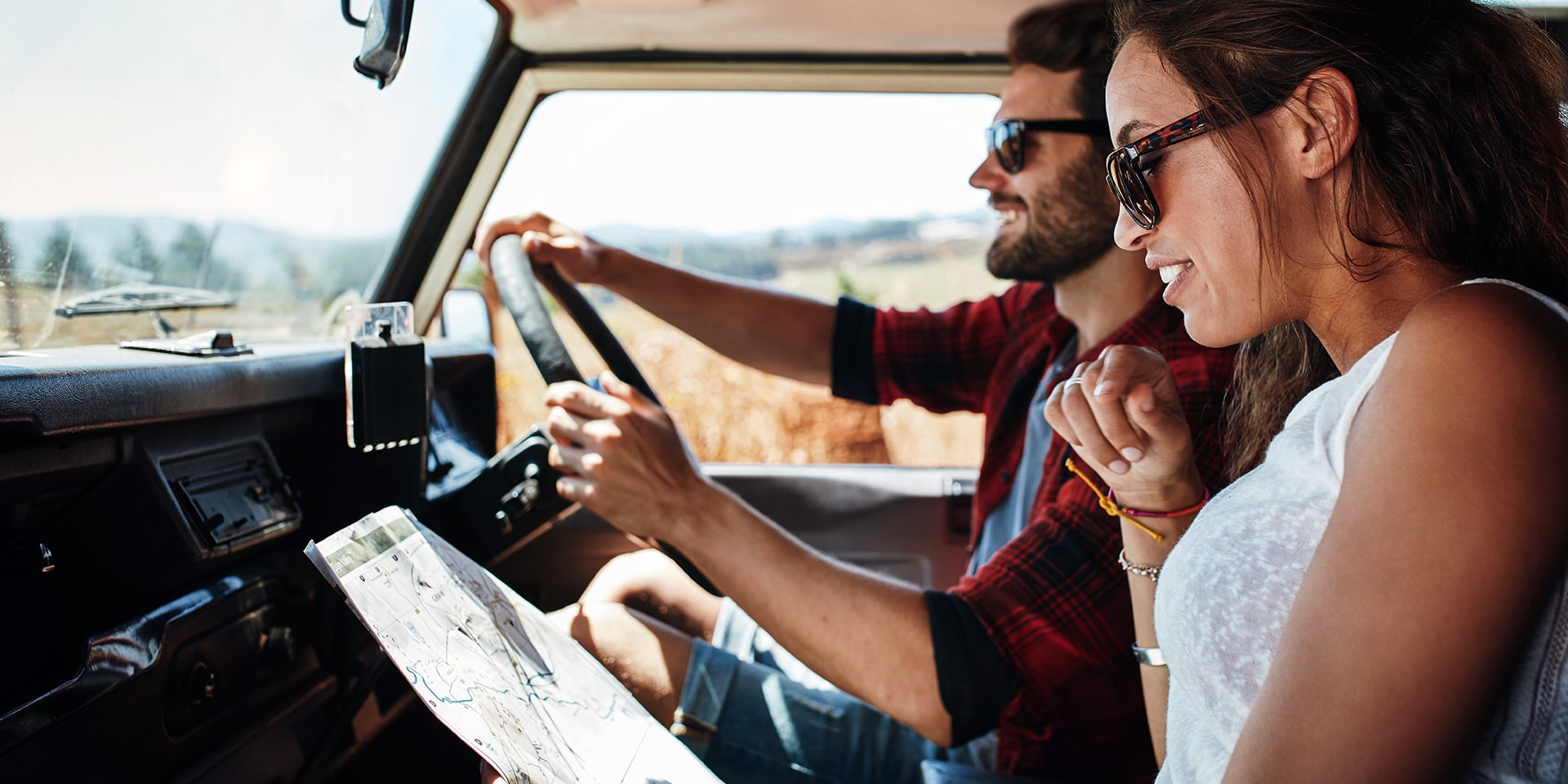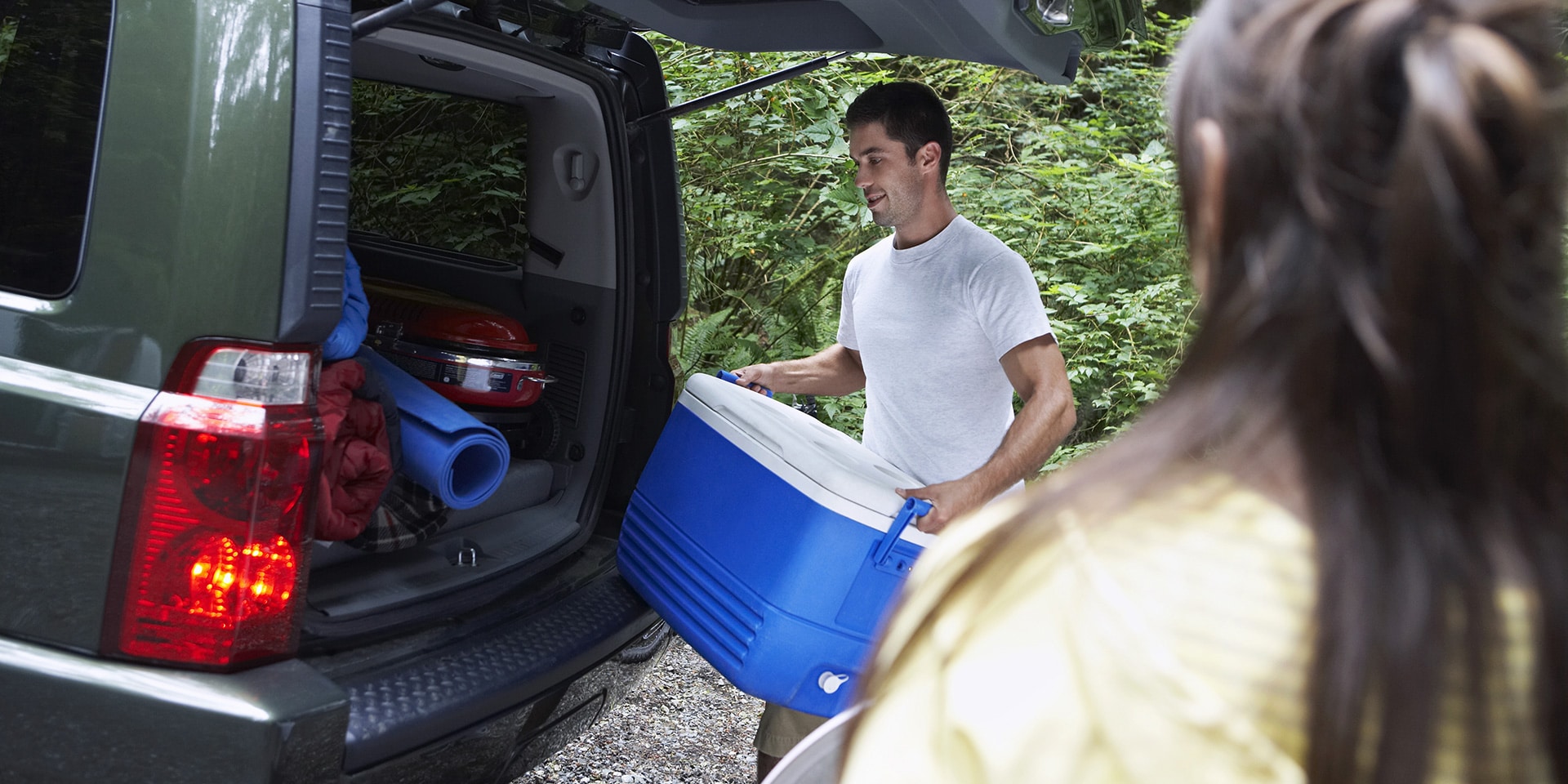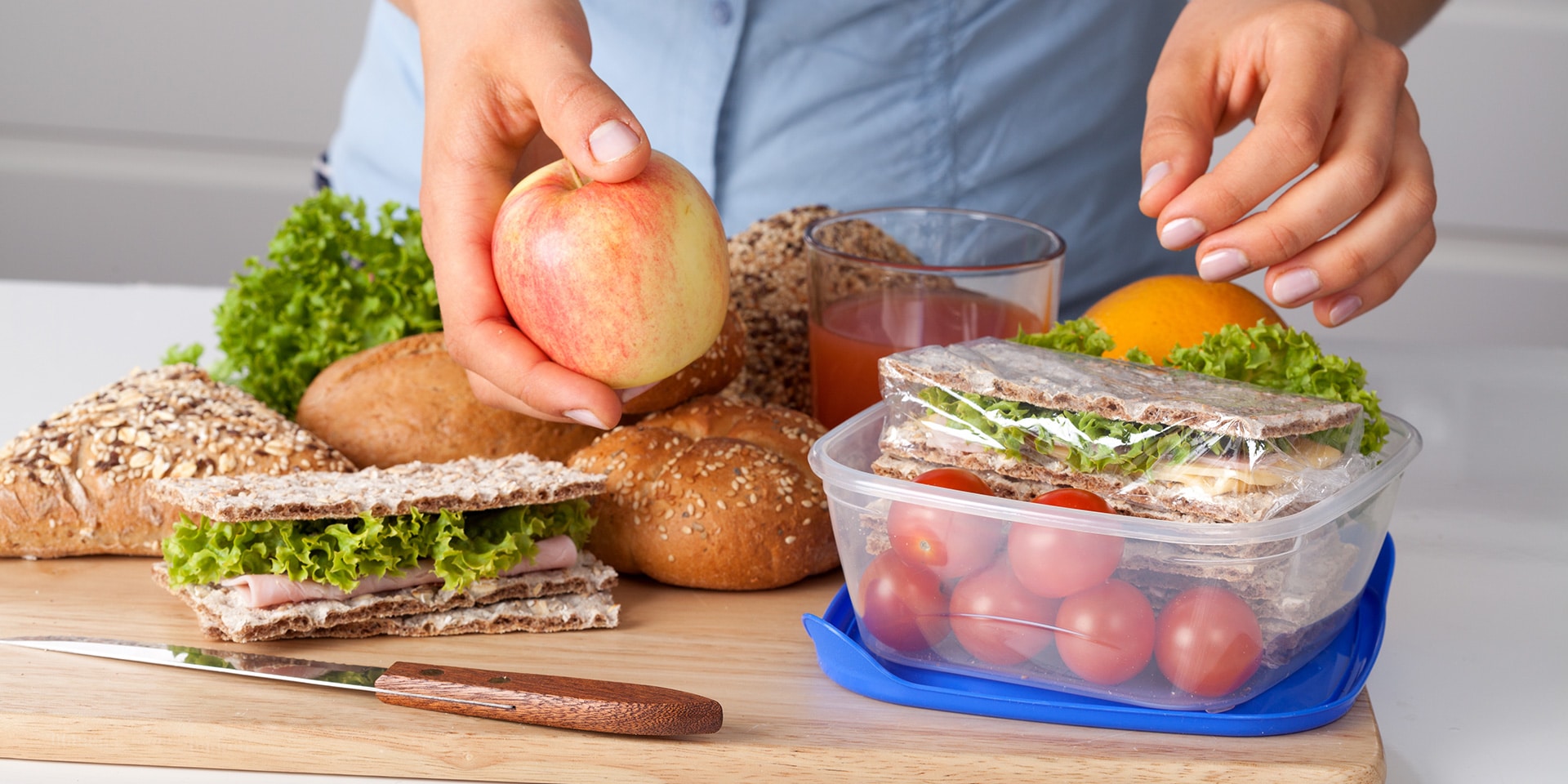
Pack your bags and leave your worries at home on your next road trip. (Photo: Shutterstock)
Road TripsYour Ultimate Guide to a Stress-Free Road Trip
By Stephanie LeeGetting behind the wheel to embark on a road trip opens a whole world of freedom, sights and opportunities to explore.
A successful road trip is far more than simply cramming friends or family into your car, fighting over shotgun and screeching off into the sunset.
Well, it can be those things, but if you want to have a memorable road trip without going stir crazy, there are a few more how-tos, travel hacks, and general best practices for staying safe and healthy.
Whether you’re planning a multi-day, week, or month-long road trip, here’s how you can avoid the common pitfalls and pave a smooth road ahead.
As always, check for travel restrictions and closures before planning your trip.
1. Plan your route…but leave wiggle room.

Some argue that the allure of road trips is born out of a little spontaneity and mystery, but you’ll save yourself (and whoever else is with you) a lot of time, headaches, and nightmare-ish arguments if you plan the route (and alternatives) beforehand. Be sure to map out the highways and roads you’ll be taking as well as the states you may drive through, checking for any relevant travel advisories.
A few amazing road-tripping planning tools include:
- TripAdvisor – A community-driven website that is chock full of information on places to eat, see, and stay, as well as things to do anywhere.
- RoadTrippers – This helps you find the best spots to stop for sightseeing and rest along the way.
- Road Trip Planner – An easy-to-use site that takes a lot of the extra work out of researching. You’ll get recommendations based on five categories: food, games, apps, music, and safety.
- Weather Underground – Bad weather and road conditions can ruin a trip if you’re unprepared for them, but Weather Underground’s road trip planner can fix that.
- Google – Good ol’ Google has your back with myriad road trip maps. This is more helpful if you want to include national parks in your trip.
Still, the responsibility to plan the route more than likely falls on one person. If that’s you, make sure to clearly communicate your plans with everyone else so they know what to expect and can bring up concerns and/or input early on (preferably before you’re all stuck in a small space together).
More importantly, leave room for exploration, fun, relaxation and metaphorical bumps along the road. Don’t be that person who needs to try to control everything and stick to an unbending schedule.
2. Set a budget range.
The expenses in a road trip can add up really quickly. The big elephant in the room is the cost of gas. When you start setting up the budget, it should be built around the approximate cost of fuel across your entire trip.
In fact, it’s better if you overestimate the cost per gallon a bit. An app like GasBuddy will be instrumental. Both can help you fetch the deets on the best spots to re-fuel based on your price preferences and region.
Then there are the costs of food and lodging, along with hidden costs of parking fees and tolls. When you’re splitting costs and settling IOUs, apps like Venmo will help you organize all the expenses to make everybody’s lives easier.
3. Consider a rental car.
Depending on the length of the trip and where you go, a road trip can place a lot of stress and mileage on a car, which can depreciate its value. If you care about your personal vehicle, consider renting or car sharing.
Whether you choose a rental car or drive your own vehicle, always clean the inside of your car down regularly with the wipes, making sure to do the steering wheel, cup holders, seatbelts, door handles and gear shifts. When you do stop to get gas, after touching pumps make sure to clean your hands with alcohol-based sanitizer.
One benefit to springing for a rental car is that you can choose preferred features, like better fuel economy, more room, XM radio, GPS, and so on. Especially when sharing the cost with a few people, a rental car can definitely pay off on longer road trips.
4. Pack smart.

In addition to must-have clothes, shoes and undergarments, bring essentials like snacks (see below), bottled water, medications and products to keep hands and surfaces sanitized like disinfecting wipes, alcohol-based hand sanitizers, disposable gloves and plastic bags.
Without the limits of carry-on luggage and overhead bins, we tend to get overzealous with packing since we can just “shove it all in the car.” The smarter thing would be to avoid packing your car to the brim with things you probably don’t need. You end up limiting storage space for your co-trippers (or souvenirs!), but also increase the likelihood of calling unwanted attention to your car (ruh-roh!).
To save space, try stacking several plastic organizing drawers in the trunk for your clothes rather than suitcases; or stick to malleable duffel bags.
5. Rest stop savvy.
At various points in the trip, you’ll find yourself in need of a rest stop, whether to get gas, buy food or use the restroom. Wear a mask in public spaces, and remember that when using public restrooms, good hygiene is key. Wash you hands with hot water and soap after using the bathroom, and avoid touching any surfaces like the faucet or door handle once you’ve cleaned your hands (use a paper towel if necessary). If there’s no soap in the bathroom, use an alcohol-based hand sanitizer.
If you need to pump gas, try to wear disposable gloves rather than touch the pump, and use hand sanitizer after you’re finished. Finally, pay for anything you purchase with a credit card to insure a no-contact experience.
6. Healthier road-trip friendly foods.

Pre-pack meals, snacks and drinks so that you can minimize the number of stops you make at public rest stops. Bring high-protein snacks like nuts, energy bars and cheese sticks — they’ll keep you feeling full for longer.
When eating on the road, you want to emphasize foods that are easy to reach, won’t make a mess in the car, are share-able but non-perishable, and help sustain your energy for those long drives. Some alternatives to the typical chips and candy fare:
- Jerky – There are lots of different types of jerky, and it keeps you satisfied for longer hours.
- Rice cakes, crackers and popcorn – Greater lower-calorie options to munch on than Frito Lays.
- Peanut butter – No matter how old you are, it’s always peanut butter time. Slap it on some pretzel chips, crackers, or even veggies to make a delicious snack.
- Trail mix and nuts – A mix of nuts, dried fruit and chocolate satisfies cravings of sweet and savory at the same time. Plus, the healthy fats and fiber help keep your blood sugar leveled compared to, say, chips.
- Dried or freeze-dried fruit – While the sugar content can sometimes be the same as plain candy, there are more vitamins and minerals to be found in fruit.
Pro tip: It wouldn’t hurt to bring a cooler if you’ve got the room. There are even coolers/warmers that you can plug into the car.
7. Bring these road trip must-haves.
Do. Not. Forget:
- Sanitation. Face masks, disinfecting wet wipes, alcohol-based hand sanitizer, disposable gloves and an extra roll of toilet paper. Don’t say we didn’t warn you.
- Chargers. In this day and age, you can essentially call phone chargers the lifeblood of any (successful) trip. Have one for the car and a portable one to bring around with you.
- Sunglasses. Have you ever tried staring into the sun while driving? No bueno.
- Ear candy. Radio signals will go in and out, so have a variety of audiobooks, podcasts, and premade music playlists. Make sure that you have a phone adapter to plug into your car beforehand.
- Trash bag. A simple plastic bag will do, but you can cleverly MacGuyver a spill- and smell-proof trash container by lining a plastic cereal container with a plastic bag.
- Emergency plans. Make sure you have resources you need for emergency roadside assistance, spare tires, and an emergency medical kit. Just in case.
Planning and having these things will pay off in spades when you’re finally on the road, and are hours’ and days’ worth of travel games away from your next destination.
This article was published as part of a partnership with Zipcar’s online magazine Ziptopia.







